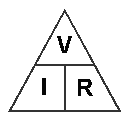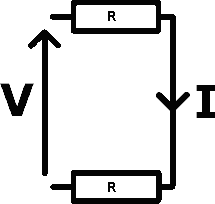Introduction
Electricity is brilliant stuff. Without it the world would be a very different place. A bleak civilisation with no computers, Internet access or pop-up toasters. A place where even Bit-Tech wouldn't even exist - unthinkable. Despite this, very few people know what electricity actually is let alone how to use it. Most people's electronic knowledge extends to knowing that when you hit that white thing on the wall, the room lights up. This is a shame, especially for modders, since with just the very basics of electronics under your belt you can accomplish some pretty impressive things which will make your case stand out amongst the best of 'em.
In this series of guides I'm going to be taking you through the world of electromodding. In Part One we'll look at the theory behind electricity or components and then in the next I'll take you through building a neat device for your rig that uses this theory practically. In this, the first instalment, we'll be looking at the very basics – What is electricity? And more importantly, How do you go about using it?
Electricity
If you've ever picked up a book or read an article on Electronics you'll know that there are plenty of analogies to try and explain everything about electricity in a few seconds. Pressurised water pipes, rivers, roads full of traffic, the list goes on. But because electricity is such a weird thing, it doesn't behave like things you experience in day to day life. Because of this, I always think it's best to get a bit geeky and look at what electricity actually is.
Anyone who has experienced the pure unadulterated joy of having to attend science classes will know that everything is made of little bits called atoms. A part of an atom is an electron and in some materials, like metal, atoms can have a few of these spare. These 'free electrons' can move around the metal when forced, this is electricity.
The term "electricity" is far too general though: so general that I believe it better to use more specific terms. Electricity has three main parts: Voltage, Current and Resistance; these are what we'll be talking about instead. Let's take a look at each of them.
Current: This is the flow of those little electrons. Just like distance is measured in centimetres or inches, Current is measured in Amps; the more electrons that pass through a wire or component per second, the greater the current. One Amp of current is approximately 6,240,000,000,000,000,000 electrons per second.
Voltage: (aka Potential Difference) Imagine a metal wire as a piece of pipe, and the free electrons in it as little styrofoam balls. If you held this pipe perfectly flat, how would you make the balls start to flow? You'd have to raise one side of the pipe up or down relative to the other side. In other words you'd have to make a difference in height (potential) at either end. This is what voltage is all about, and is what makes the electrons move. In other words, voltage is the "pushing" force which moves the current. Current doesn't exist without voltage. Voltage is measured in, you guessed it, Volts, named after the Italian Count, Alessandro Volta.
Resistance: Resistance is simply anything that hinders the flow of current. Everything, even wire, has some resistance, and it is measured in Ohms, named after the 19th Century German physicist, Georg Simon Ohm, after whom the cornerstone Law is named (see below). Without resistance there would be no voltage. Every electrical conductor has some resistance, even a "short circuit". If a piece of wire had truly no resistance then the voltage or potential difference across it would be "shorted out" making the votage = 0. As stated above no voltage = no current.
All these things are linked together by the most common formula in electronics, Ohm's Law (where V is voltage, I is current and R is resistance):
...this looks scarey at first but it is much simpler than it looks. What it means is that if you take the current through a component and multiply it by the resistance of that component you'll be able to figure out the voltage. That if you divide the voltage across a component by the resistance of the component you'll get the current. And that if you divide the voltage across a component by the current through it you'll get the resistance. That might not sound that useful, but we'll be needing that simple equation quite a bit as you'll see later. If you draw a triangle with voltage at the top and current and resistance on the bottom you can easily work out each of these equations.. simply cover up what you want to find and it will show you the sum. Magic.

Remember Voltage is ACROSS a component and Current flows THROUGH a component. This is a vital concept to understand.
Types of Circuit
There are three main methods you can connect two or more components together to form a circuit: a circuit is just an electrical loop that the current can flow around, thus performing useful tasks like drive fans and light-up LEDs. These three methods are called series, parallel and mixed. Let's take a look...
Series

Components are connected to the circuit sequentially, or one after the other. The current flowing through the components is the same everywhere but the voltage can be different for each components.
Parallel

As the name would suggest, components are connected on separate paths, allowing current to flow through both simultaneously. In this arrangement, voltage is always the same but current can be different for each component.
Mixed
This is just a mixture of the above two. To figure out what's happening with the voltage and current in this one you have to split it into series and parallel sub-sections and look at each one. We'll look at this more when we come across a mixed circuit.
Electricity is brilliant stuff. Without it the world would be a very different place. A bleak civilisation with no computers, Internet access or pop-up toasters. A place where even Bit-Tech wouldn't even exist - unthinkable. Despite this, very few people know what electricity actually is let alone how to use it. Most people's electronic knowledge extends to knowing that when you hit that white thing on the wall, the room lights up. This is a shame, especially for modders, since with just the very basics of electronics under your belt you can accomplish some pretty impressive things which will make your case stand out amongst the best of 'em.
In this series of guides I'm going to be taking you through the world of electromodding. In Part One we'll look at the theory behind electricity or components and then in the next I'll take you through building a neat device for your rig that uses this theory practically. In this, the first instalment, we'll be looking at the very basics – What is electricity? And more importantly, How do you go about using it?
Electricity
If you've ever picked up a book or read an article on Electronics you'll know that there are plenty of analogies to try and explain everything about electricity in a few seconds. Pressurised water pipes, rivers, roads full of traffic, the list goes on. But because electricity is such a weird thing, it doesn't behave like things you experience in day to day life. Because of this, I always think it's best to get a bit geeky and look at what electricity actually is.
Anyone who has experienced the pure unadulterated joy of having to attend science classes will know that everything is made of little bits called atoms. A part of an atom is an electron and in some materials, like metal, atoms can have a few of these spare. These 'free electrons' can move around the metal when forced, this is electricity.
The term "electricity" is far too general though: so general that I believe it better to use more specific terms. Electricity has three main parts: Voltage, Current and Resistance; these are what we'll be talking about instead. Let's take a look at each of them.
Current: This is the flow of those little electrons. Just like distance is measured in centimetres or inches, Current is measured in Amps; the more electrons that pass through a wire or component per second, the greater the current. One Amp of current is approximately 6,240,000,000,000,000,000 electrons per second.
Voltage: (aka Potential Difference) Imagine a metal wire as a piece of pipe, and the free electrons in it as little styrofoam balls. If you held this pipe perfectly flat, how would you make the balls start to flow? You'd have to raise one side of the pipe up or down relative to the other side. In other words you'd have to make a difference in height (potential) at either end. This is what voltage is all about, and is what makes the electrons move. In other words, voltage is the "pushing" force which moves the current. Current doesn't exist without voltage. Voltage is measured in, you guessed it, Volts, named after the Italian Count, Alessandro Volta.
Resistance: Resistance is simply anything that hinders the flow of current. Everything, even wire, has some resistance, and it is measured in Ohms, named after the 19th Century German physicist, Georg Simon Ohm, after whom the cornerstone Law is named (see below). Without resistance there would be no voltage. Every electrical conductor has some resistance, even a "short circuit". If a piece of wire had truly no resistance then the voltage or potential difference across it would be "shorted out" making the votage = 0. As stated above no voltage = no current.
All these things are linked together by the most common formula in electronics, Ohm's Law (where V is voltage, I is current and R is resistance):
V=IR thus I=V/R thus R=V/I
...this looks scarey at first but it is much simpler than it looks. What it means is that if you take the current through a component and multiply it by the resistance of that component you'll be able to figure out the voltage. That if you divide the voltage across a component by the resistance of the component you'll get the current. And that if you divide the voltage across a component by the current through it you'll get the resistance. That might not sound that useful, but we'll be needing that simple equation quite a bit as you'll see later. If you draw a triangle with voltage at the top and current and resistance on the bottom you can easily work out each of these equations.. simply cover up what you want to find and it will show you the sum. Magic.

Types of Circuit
There are three main methods you can connect two or more components together to form a circuit: a circuit is just an electrical loop that the current can flow around, thus performing useful tasks like drive fans and light-up LEDs. These three methods are called series, parallel and mixed. Let's take a look...
Series

Components are connected to the circuit sequentially, or one after the other. The current flowing through the components is the same everywhere but the voltage can be different for each components.
Parallel

As the name would suggest, components are connected on separate paths, allowing current to flow through both simultaneously. In this arrangement, voltage is always the same but current can be different for each component.
Mixed
This is just a mixture of the above two. To figure out what's happening with the voltage and current in this one you have to split it into series and parallel sub-sections and look at each one. We'll look at this more when we come across a mixed circuit.

MSI MPG Velox 100R Chassis Review
October 14 2021 | 15:04








Want to comment? Please log in.